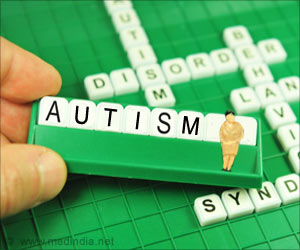Severity of autistic personality traits can be demonstrated using an algorithm based on brain activity.

TOP INSIGHT
Severity of autistic personality traits can be demonstrated using an algorithm based on brain activity. This novel technology applies mathematical (ε-complexity) theory for the first time to decode data recorded with functional near-infrared spectroscopy (fNIRS) neuroimaging, thus making it a convenient diagnostic tool for autism spectrum disorders, with ease of accessibility, as compared to fMRI, traditional MRI, or EEG.
Autistic Personality Traits Decoded
The study team involved 26 healthy subjects (5 were excluded from the final sample due to noisy signals) to test the algorithms using ε-complexity coefficients (relatively new mathematical approach) that extracts meaningful information from complex and noisy patterns of brain activity.
The participants were allowed to complete the Autism Spectrum Quotient, based upon the result of which, they were divided into two groups: those with strong autistic traits and those with weak autistic traits.
Since people with ASD have difficulty coordinating joint actions, the concept was utilized to ask the participants to perform an interpersonal synchronized movement task. Participants were asked to move their right hand in synchronization with that of the researcher for several minutes while their brain activity was recorded.
The functional near-infrared spectroscopy (fNIRS) was used to record subjects' brain activity as it is a more affordable and portable technology that does not make noise. Thus making it a suitable neuroimaging technique for studying the brain activity of people with autism.
The team successfully applied ε-complexity theory for the first time to decode data recorded with fNIRS, thus opening the possibility of using the new algorithm in other studies with fNIRS technology. This novel technology thus can be utilized as a convenient diagnostic tool for autism spectrum disorders, with ease of accessibility, as compared to fMRI, traditional MRI, or EEG.
"We used ε-complexity methodology, which has been developed over the past few years by dr. Darkhovsky B.S., in our study to develop an algorithm for classifying patients based on fNIRS records of brain activity. The resulting model-free technology for time series analysis can be used in cases where the prerequisites of traditional methods of analysis are violated -- for example, when working with significantly non-stationary ECG and EEG signals. Therefore, this technology can be used to study other mental disorders and features, the patterns of which appear in the data", says study co-author Yuri Dubnov, a senior lecturer of computer science at HSE University.
Source-Medindia
 MEDINDIA
MEDINDIA



 Email
Email








